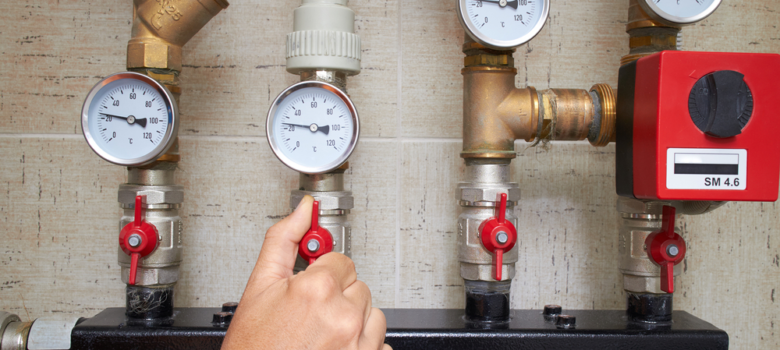
Water pressure – it ain’t glamorous but it sure is important.
When it’s good you barely think about it, but when it’s bad it’s a massive headache. There’s a vast number of plumbing problems in the home that originate from poor water pressure. This can lead to unsatisfactory showers, poorly functioning toilets, damaged pipes, and painfully high bills.
We get enquiries every week asking whether replacing the boiler or investing in a hot water tank are the only options to improve water pressure, but most of the time that isn’t necessary.
Recommended Water Pressure
Depending upon where you live, the water pressure can vary greatly. This is because your home water supply comes in from the municipal supply lines which provide different levels of pressure in different areas. This can create problems, as the PSI (pounds per square inch) rating can range from as low as 20 to as high as 100.

The pressure you require will be dependent on the size of your house, the arrangement of your piping (bends slow the water down) and the amount of hot water you use; a 6 bedroom townhouse will need higher incoming pressure than a small bungalow.
For most properties the incoming water pressure should never be over 75 PSI, with the consensus placing the ideal flow at 50 PSI. Most pressure regulators are set at this level by default.
How to Test Water Pressure
The easiest way to check your home’s water pressure is to test the incoming pressure from the municipal lines.
- Locate the first faucet along the incoming water line. This faucet has the highest pressure and will tell you if any pressure issues are in your home or originate in the municipal lines.
- Make sure there is no water being used anywhere in the house. You may wish to use individual shut-off valves for faucets or toilets if you plan to exclude those from the test.
- Close the main shut-off valve.
- Attach a water pressure gauge to the faucet.
- Turn on the faucet completely to get a reading of the pressure.
Once you’ve done this first reading and have an idea of the initial pressure rating, you can test other faucets in the home using the same method to help locate pressure issues.
This is especially useful if you end up needing to have a plumber check the pipes, as it provides a much smaller area to search for the source of your pressure problem and will therefore cut down on the plumbing bills.
How to Test Water Pressure
There are many potential reasons for low pressure, a lot of which are easy to remedy without the expense of a professional.
Single dodgy faucet: This is often caused by debris in the filter screen – there is usually one located at the end of the tap and sometimes another inside the base.
The fix: Simply rinse and wipe out the debris, and it should improve the water flow immediately.
Improperly positioned shut-off valve: A common culprit of low pressure, there is a main shut-off valve for the entire home as well those leading into your toilets, sinks, etc. If not fully opened, they can restrict the flow of water, reducing pressure.
The fix: Ensure the valve is fully open and try again.
Pressure reduction valve: In some areas water is provided at high pressures as standard, and your home may have a pressure reduction valve installed to limit the incoming water pressure. The factory default is usually 50 PSI, but may have been set lower.
The fix: Adjusting the settings will often alleviate the problem. 50 PSI is a good guideline, but if you have a larger house and higher water usage then you might need it higher. Remember to be careful and use common sense when raising the regulator – too high and you could overload the system.
Think we missed something? Do you have a different opinion?
Comment below to get your voice heard…












Your third headline (How to Test Water Pressure) is misleading. I think you meant “reasons for low pressure”?
Your third headline (How to Test Water Pressure) is misleading. I think you meant “reasons for low pressure”?